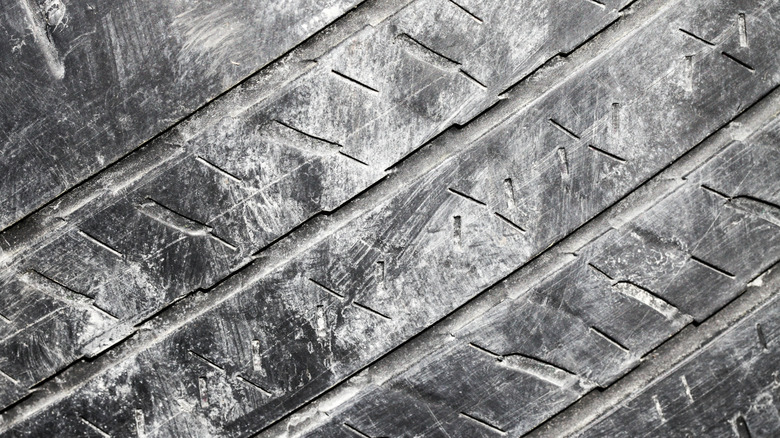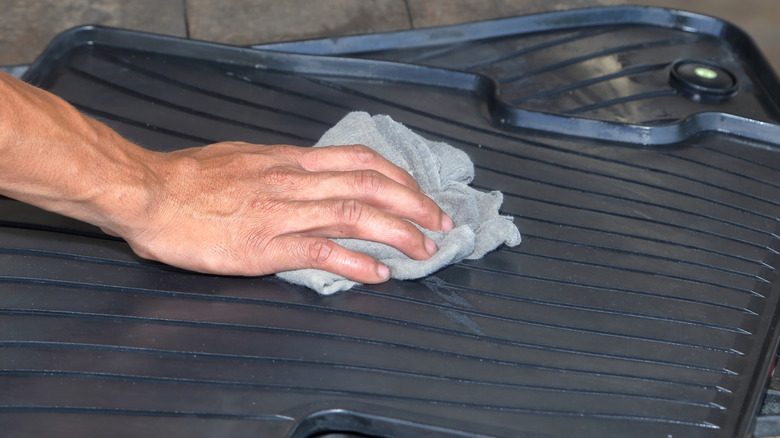What Causes The White Powdery Residue On New Car Parts?
Finding an area of your vehicle that's discolored or doesn't look right can be a scary experience. However, if you take a look at your engine bay and see a powdery, white residue along some of your rubber pieces, it's not as much of an issue as you may initially believe. The white residue that rises from the rubber pieces in your vehicle is called rubber bloom, and it's entirely natural. You may also find rubber bloom on your tires, rubber seals, or even on rubber materials inside your vehicle.
Rubber bloom occurs due to the lubricant that is added to the rubber to help mitigate friction. One type of lubricant that companies use is silicone oil. However, using silicone oil in rubber compounds causes issues as the oil is incompatible with rubber. This incompatibility causes the oil to rise to the surface of the rubber, showing as a white residue.
There are other materials that are used in rubber that can show as rubber bloom besides just silicone oil. Sulfur and peroxide have been used to help cure rubber, which is when raw rubber is transformed into durable and elastic rubber. If the sulfur or peroxide are not sufficiently used up during the curing effort, a white rubber bloom can appear.
How to remove rubber bloom
While having rubber bloom occur can induce some stress, it's not a cause for concern and is surprisingly easy to remove. In fact, you'll likely be able to wipe off the bloom with cleaning materials you already have on hand. Being able to perform light maintenance on your vehicle, such as cleaning rubber bloom or restoring plastic trim pieces, will help save you money in the long term. One of the easiest ways to remove rubber bloom from your vehicle is to wipe the rubber away with a cloth and some isopropyl alcohol. However, Be sure not to leave excess alcohol on the rubber, as it can slowly degrade the rubber over time.
If you're too concerned about the rubber degrading, you can use a mixture of mineral oil and water. However, similar to using isopropyl alcohol, mineral oil can also have some negative effects on your rubber. If the rubber is exposed to too much mineral oil, it can become stiff and brittle. That will, in time, cause the rubber to crack and tear, leading you to shell out more money for another o-ring or rubber belt. WD-40 even makes some rubber-safe products you can use.
There is also another, more complicated way for reducing and removing rubber bloom. If you find a white powdery residue on your rubber components, you can cure the rubber a second time by baking the rubber. This will help keep the cause of the rubber bloom in check.

